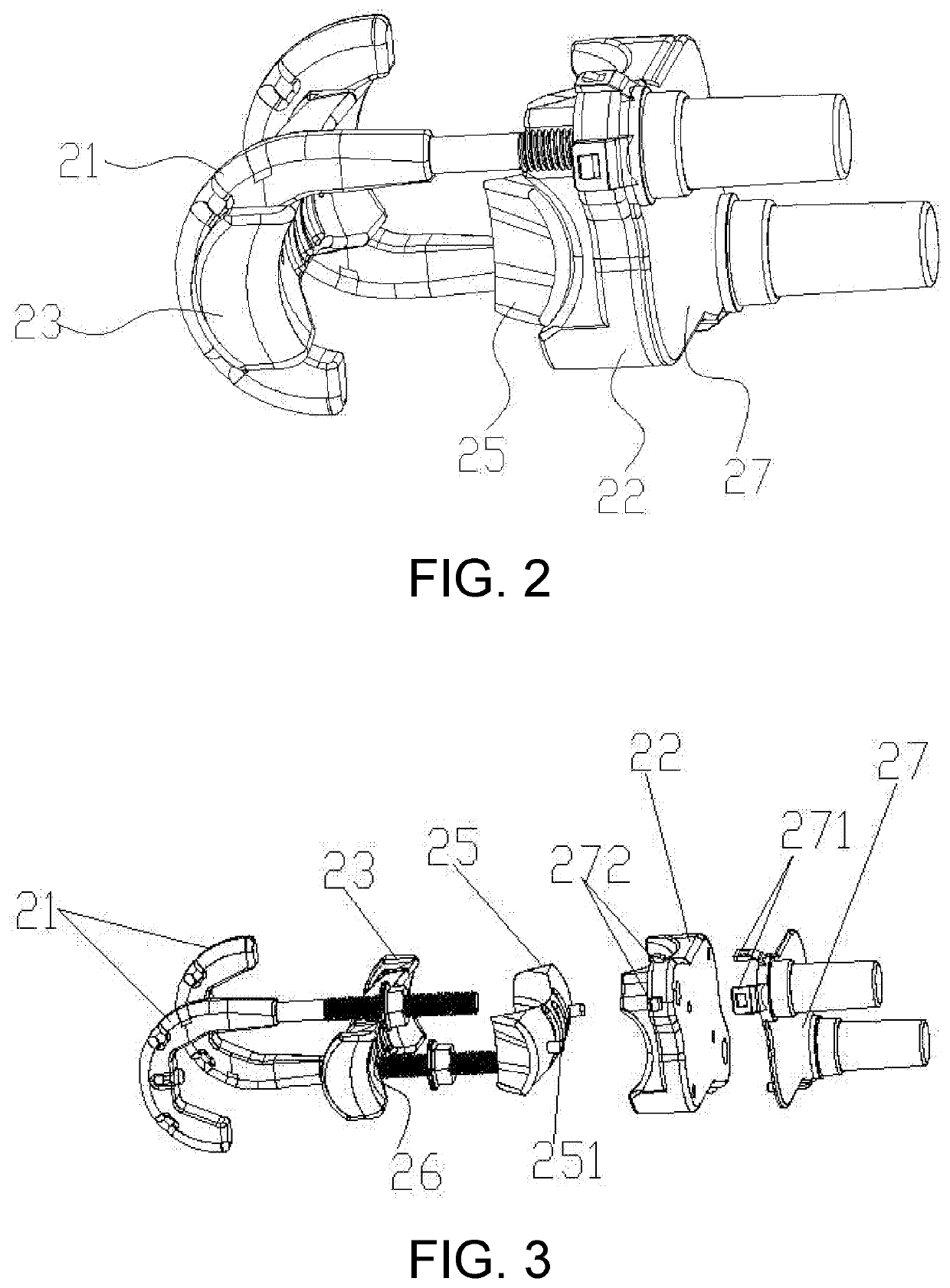Integrated opposite hook wire clamp
a technology of opposite hooks and clamps, applied in the direction of overhead installation, electric cable installation, electric cable suspension arrangements, etc., can solve the problems of wire looseness, ineffective method, wire loosening or even falling off after being used
- Summary
- Abstract
- Description
- Claims
- Application Information
AI Technical Summary
Benefits of technology
Problems solved by technology
Method used
Image
Examples
embodiment 1
[0034]As shown in FIG. 1 to FIG. 7, an integrated opposite hook wire clamp includes a clamping plate 22, a connecting plate 23 and two J-shaped clamps 21. Side bars of the J-shaped clamps 21 are locking bars 212. The clamping plate 22 is provided with locking holes 222 corresponding to the locking bars 212, and the two locking holes 222 are diagonally disposed on the clamping plate 22. The locking bars 212 of the J-shaped clamps 21 vertically pass through the locking holes 222 on the clamping plate 22, respectively, and are movably connected to the clamping plate 22 by a locking mechanism. A back surface of the connecting plate 23 is lap-jointed to an inner side of a hook 211 of each of the two J-shaped clamps 21, and a front surface of the connecting plate 23 is opposite to a front surface of the clamping plate 22. The locking mechanism adopts a threaded connection mechanism, and each of the locking bars 212 is provided with an external thread and a corresponding nut. The locking b...
embodiment 2
[0044]On basis of the technical solution of the Embodiment 1, the locking mechanism of the integrated opposite hook wire clamp adopts an anti-reverse self-locking mechanism.
[0045]As shown in FIG. 8, the anti-reverse self-locking mechanism is configured in the manner that: each of the locking bars 212 is provided with a plurality of consecutively arranged anti-reverse ring teeth 2121 that are inclined toward a root of a corresponding one of the locking bars 212. A lateral side of each of the locking holes 222 is provided with an opening, and the opening has a movable locking block 223 disposed therein. A front end of the locking block 223 is provided with a plurality of locking teeth 2231 inclined toward an outlet of the locking hole 222 and can cooperate with the anti-reverse ring teeth 2121. The back surface of the locking block 223 abuts against the locking springs 224. When the locking bars 212 are inserted from inlets of the locking holes 222, the locking springs 224 push the lo...
PUM
 Login to View More
Login to View More Abstract
Description
Claims
Application Information
 Login to View More
Login to View More - R&D
- Intellectual Property
- Life Sciences
- Materials
- Tech Scout
- Unparalleled Data Quality
- Higher Quality Content
- 60% Fewer Hallucinations
Browse by: Latest US Patents, China's latest patents, Technical Efficacy Thesaurus, Application Domain, Technology Topic, Popular Technical Reports.
© 2025 PatSnap. All rights reserved.Legal|Privacy policy|Modern Slavery Act Transparency Statement|Sitemap|About US| Contact US: help@patsnap.com



